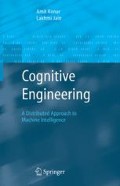3.12 Summary
This chapter presented principles of fuzzy reasoning by various models of fuzzy Petri nets. Broadly speaking, the models are of two basic types: forward reasoning models and backward reasoning models. The forward reasoning models are usually employed to determine the membership distribution of the concluding propositions in a fuzzy Petri net. The backward reasoning model, on the other hand, first identifies the selected axioms in the Petri net, which only can influence the membership of the goal proposition. This is implemented by back-tracing the network from the available goal (concluding) proposition until the axioms are reached. The places thus traced in the FPN are sufficient to determine the membership of the given goal proposition. The chapter also introduces the possible scheme of machine learning on a fuzzy Petri net. Because of the inherent feature of approximate reasoning, FPNs used for machine learning have a promising feature in fuzzy pattern recognition from noisy training instances.
Access this chapter
Tax calculation will be finalised at checkout
Purchases are for personal use only
Preview
Unable to display preview. Download preview PDF.
References
Bender, E. A., Mathematical Methods to Artificial Intelligence, IEEE Computer Society Press, Los Alamitos, 1996.
Bugarin, A. J. and Barro, S., “Fuzzy reasoning supported by Petri nets,” IEEE Trans. on Fuzzy Systems, vol. 2, pp.135–145, May 1994.
Chen, S. M. “Fuzzy backward reasoning using fuzzy Petri nets”, IEEE Trans. on Systems, Man and Cybernetics-Part B: Cybernetics, vol. 30, no. 6, pp. 846–855, Dec.n2000.
Chen, S. M., Ke, J. S. and Chang, J. F., “Knowledge representation using fuzzy Petri nets,” IEEE Trans. on Knowledge and Data Engineering, vol. 2, no. 3, pp. 311–319, Sept. 1990.
Garg, M. L., Ahson, S. L. and Gupta, P.V., “A fuzzy Petri net for knowledge representation and reasoning,” Information Processing Letters, vol. 39, pp. 165–171, Aug. 1991.
Kemney, G. J. and Snell, J. L., Finite Markov Chains, D. Van Nostrand Co., Inc., New York, 1960.
Konar, A., Uncertainty Management in Expert Systems Using Fuzzy Petri Nets, Ph.D. Thesis, Jadavpur University, 1994.
Konar, A. and Mandal, A. K., “Uncertainty management in expert systems using fuzzy Petri nets,” IEEE Trans. on Knowledge and Data Engineering, vol. 8, no. 1, pp. 96–105, Feb. 1996.
Looney, C. G., “Fuzzy Petri nets for rule-based decision making,” IEEE Trans. on Systems, Man and Cybernetics, vol. 18, no. 1, pp. 178–183, Jan/Feb. 1988.
Murata, T., “Petri nets: properties, analysis and applications,” Proceedings of the IEEE, vol. 77, no. 4, pp. 541–580, April 1989.
Nilsson, N., Principles of Artificial Intelligence, Morgan Kaufmann, San Francisco, 1980.
Pal, S. and Konar, A., “Modeling cognition using fuzzy neural nets,” In Fuzzy Theory Systems: Techniques & Applications, Leondes, C. T. (Ed.), Academic Press, 1999.
Pearl, J., “Distributed revision of composite beliefs,” Artificial Intelligence, vol. 33, 1987.
Pedrycz, W. and Gomide, F., “A generalized fuzzy Petri net model,” IEEE Trans. on Fuzzy Systems, vol. 2, no. 4, pp. 295–301, Nov. 1994.
Quillian, R., “Semantic memory,” In Semantic Information Processing, Minsky, M. (Ed.), MIT Press, Cambridge, MA, 1968.
Russel, S. and Norvig, P., Artificial Intelligence, Prentice-Hall, Englewood-Cliffs, NJ, 1995.
Scarpelli, H., Gomide, F. and Yager, R.R., “A reasoning algorithm for high-level fuzzy Petri nets,” IEEE Trans. on Fuzzy Systems, vol. 4, no. 3, pp. 282–294, Aug. 1996.
Wang, H., Jiang, C. and Liao, S., “Concurrent reasoning of fuzzy logical Petri nets based on multi-task schedule,” IEEE Trans. on Fuzzy Systems, vol. 9, no. 3, June 2001.
Yu, S. K., “Knowledge representation and reasoning using fuzzy Pr/T net-systems,” Fuzzy Sets and Systems, vol. 75, pp. 33–45, 1995.
Rights and permissions
Copyright information
© 2005 Springer-Verlag London Limited
About this chapter
Cite this chapter
(2005). Distributed Reasoning by Fuzzy Petri Nets: A Review. In: Cognitive Engineering. Advanced Information and Knowledge Processing. Springer, London. https://doi.org/10.1007/1-84628-234-9_3
Download citation
DOI: https://doi.org/10.1007/1-84628-234-9_3
Publisher Name: Springer, London
Print ISBN: 978-1-85233-975-3
Online ISBN: 978-1-84628-234-8
eBook Packages: Computer ScienceComputer Science (R0)

